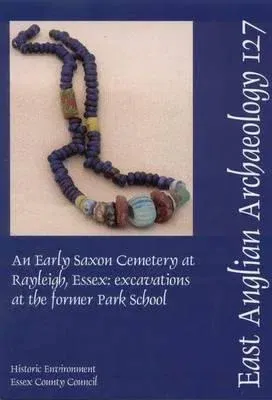An early Anglo-Saxon cemetery was identified and excavated within the
grounds of the former Park School, Rayleigh, Essex, in advance of
development. The remains of 145 cremation burials, a further four
possible cremation burials, a single possible inhumation burial and
sixteen cemetery-related features were excavated over an area of 4325 sq
m, most of which had been severely truncated. Although the majority of
the cemetery appeared to be within the area of excavation, it is highly
likely that further burials lie beyond the southern limit of the
development. Pottery vessels, metalwork and glass beads recovered from
the burials indicate that the cemetery was in use from the second half
of the 5th century through to the mid 6th century AD, and possibly into
the late 6th. A relative paucity of higher status objects, including a
complete lack of copper-alloy jewellery, suggests that the interred were
part of a low-status, but fairly average, agricultural community. Some
of the styles of pottery decoration have parallels in the cemetery at
Mucking and in cemeteries in North Kent, indicating cross-Thames
movement of goods and craftsmen and perhaps a shared ethnic identity. A
range of pyre goods were recovered in addition to the cremated human
bone; all had been burnt at high temperatures. No pyre locations were
identified, however. Pyre goods included the remains of food animals,
secondary pottery vessels, glass beads and drinking vessels,
copper-alloy bucket fittings, iron buckles, knife blades and possible
shield rivets. One pit contained a relatively large amount of pyre goods
and debris that appeared to have been deliberately buried. The possible
inhumation burial contained a complete unburnt glass, amber and jet bead
necklace, an iron knife blade and a copper-alloy suspension ring. The
Rayleigh cemetery was situated on the edge of a localised high point
overlooking the floodplain of the River Crouch. It may have served a
nearby settlement or a number of dispersed rural communities situated on
the lower ground to the north and west. Underlying the cemetery was a
scatter of prehistoric and Roman features that attest to earlier
occupation of the landscape. Early Saxon cemeteries in Essex usually
contain inhumation burials or a mix of inhumation and cremation burials.
The Rayleigh cemetery is therefore unusual in being predominately
comprised of cremation burials. However, it is unlikely that the
complete cemetery was excavated and it is possible that further
inhumation burials exist to the south of the development area.

